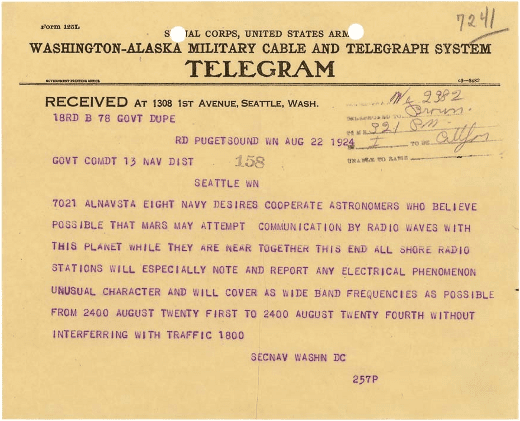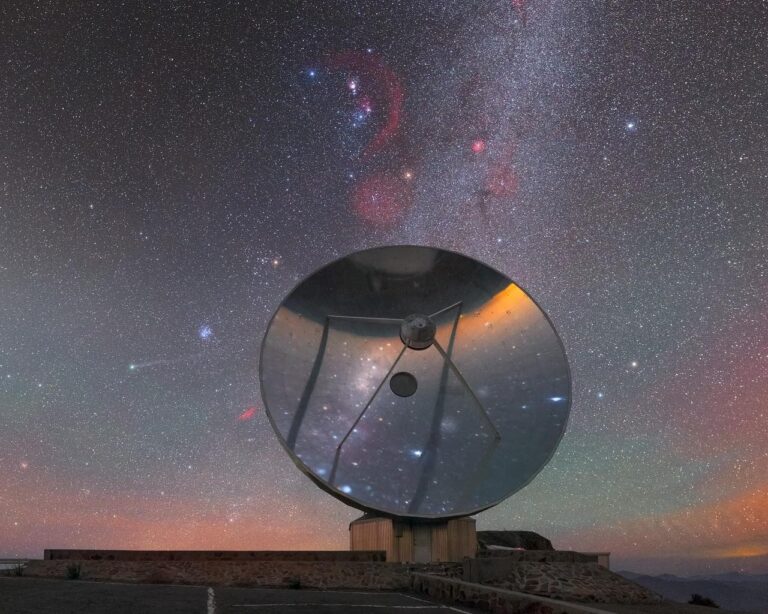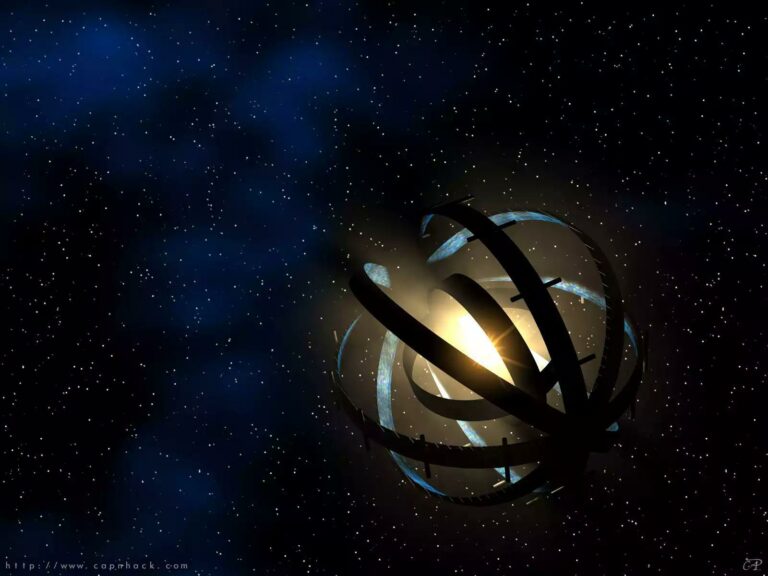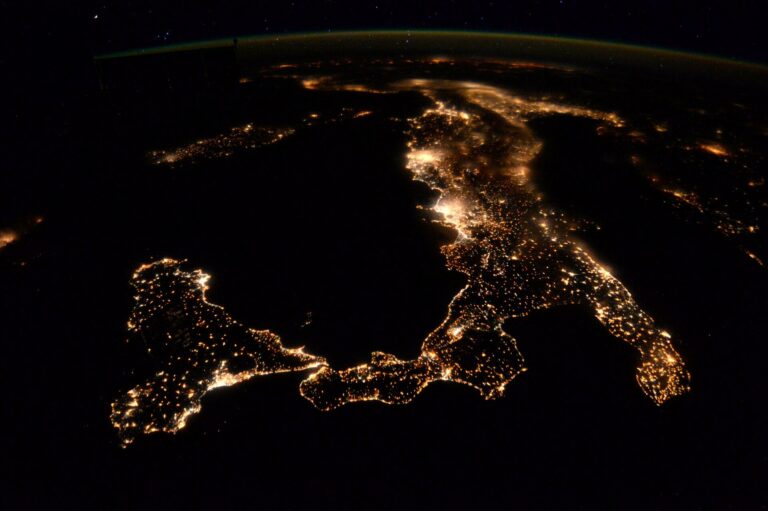When we talk about the search for alien civilizations, we usually imagine huge radio telescopes and powerful computers that process the data they collect. But few people knew that one of the most ambitious attempts to discover the “brothers in mind” took place 97 years ago.
On August 21, 1924, two days before the maximum approach of Mars to Earth in the XX century, “National Radio Silence Day” was declared in the USA. For a day and a half, every hour, all American radio stations stopped their broadcasts for five minutes. At this time, the staff of the US Naval Observatory was listening to the broadcast, trying to catch signals from the Red Planet. The army even allocated a special cryptographer to decrypt messages from the “Martians”.

Now this attempt to find intelligent life outside the Earth seems naive. But, most likely, our current efforts to detect “brothers in mind” will soon be perceived in a similar way. There are several hundred billion stars in the Milky Way alone, and the most ambitious ongoing project of the search for alien civilizations Breakthrough Listen involves listening to only one million luminaries.
But this does not mean that all our efforts are fated to fail. On the contrary, such figures rather add to optimism, showing how little we know and how many amazing discoveries await us in space.
The main question is how best to look for traces of other civilizations. For a long time, the search for radio signals was a priority. This method has both advantages and a number of significant limitations. In order to detect an artificial signal in the radio range, a number of factors must coincide — starting with the frequency chosen for listening and ending with the fact that the aliens in principle know about radio communication. Therefore, the search for technosignatures — “traces” left by advanced technologies — will give more chances to find extraterrestrial intelligence.

What can they look like? We’ve probably heard of the Dyson sphere concept. It is believed that such large-scale astroengineering structures can be found by the excess of infrared radiation. Another option is a machine for moving a star system (like the Shkadov Thruster), it should cause fluctuations in the brightness of the luminary.
Technosignatures can also “accompany” interstellar spacecraft. For example, a spacecraft with a magnetic sail emits cyclotron radiation that occurs when it interacts with the environment. And a spacecraft equipped with an antimatter thruster could be detected by the spectrum of photons emitted by it.
In principle, modern technology is already able to find signs of the phenomena described above. However, let’s be realistic: a civilization that knows how to build starships and Dyson spheres would most likely have extended its influence to a significant part of the Milky Way and would almost certainly have “declared itself” long ago.

The detection of technosignatures of civilizations similar to Earth is more likely. Suppose astronomers have found a promising Earth-like exoplanet and want to find out if there is developed life there. How can it “give itself away”?
The first clue could be given by the night side of the planet, more precisely — constant light signals “supplied” by cities with electric lighting. Of course, the luminous flow from them is many times lower than the luminosity of the daytime side. To distinguish it, a new generation of observatories will be required, equipped with significantly more sensitive instruments than those available to modern astronomers. However, this no longer seems an impossible task.

Another clue may be the “thermal islands” accompanying cities — areas where the temperature is several degrees higher than the surrounding area. Scientists will be able to distinguish them from natural heat sources (such as fires or volcanic eruptions) by the degree of heating, as well as by the peculiarities of the thermal radiation spectrum.
Astronomers are already able to identify individual chemical elements in the atmospheres of exoplanets, and will soon be able to conduct detailed analyses of them. The detection of a large amount of oxygen by default will be an argument in favor of the habitability of the world. Even more powerful evidence would be traces of chemical compounds like chlorofluorocarbons (freons), indicating industrial emissions.
Of course, Earth technologies have not yet reached the level that allows us to conduct the search for “brothers in mind” described above. But taking into account the active development of science, we can say that this will be possible in the foreseeable future. After all, just a generation ago, the number of confirmed exoplanets was zero, and now it exceeds four thousand. And who knows — perhaps there really is a developed civilization on one of them, which right now is studying the Earth for the presence of technosignatures.
Follow us on Twitter to get the most interesting space news in time
https://twitter.com/ust_magazine

